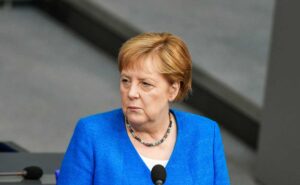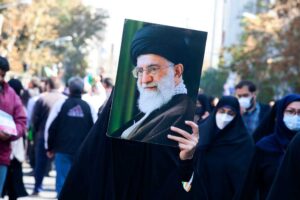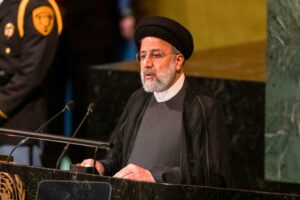Despite 10 years of engagement in Syria, the United States is yet to formulate a coherent policy regarding the country’s future. Successive US administrations have reiterated their commitment to defeating ISIS and providing humanitarian aid, whilst offering little indication of how they hope to achieve a political settlement or foster economic reconstruction. Comprehensive sanctions have exacerbated Syria’s economic woes, but failed to change the behaviour of President Bashar al-Assad’s regime, whose continued rule the US has come to accept. Meanwhile, regional stability has deteriorated in the wake of an economic collapse in neighbouring Lebanon, leaving the US attempting to solve two crises at once since October 2019. The Biden administration is now operating two independent policies in the Levant, taking markedly different approaches to the twin crises in Syria and Lebanon, neither of which shows signs of abating. This brief will attempt to demonstrate that a lack of coordination in US policy towards the two countries is hindering its efforts in the region. As its regional rivals show increasingly little regard for national boundaries, Washington has lagged behind and even hampered its efforts by treating the cases of Syria and Lebanon as isolated.
Hezbollah and Russia have managed to integrate their Lebanon and Syria policies by exploiting the porous relationship between the two nations.
In recent years, several other state actors have begun to ignore the Lebanese-Syrian border when it comes to shaping their regional strategy. Most significantly, Iran has built a range of proxy militias to expand its interest throughout the region, from the Caspian Sea to the Mediterranean. Within Lebanon and Syria, Hezbollah is a powerful cross-border force, wielding significant political, economic, and military power across the two states. Meanwhile, there are signs Russia is exploiting Syria’s relationship with various factions in Lebanon’s sectarian parliament to increase its influence in the country,[i] alongside its policy of targeted, strategic investment in both struggling economies.[ii] In short, two key regional actors have managed to integrate their Lebanon and Syria policies by exploiting the porous relationship between the two nations, thereby maximising their own influence throughout the Levant.
One impetus for this policy trend is the high degree of cross-border economic activity between the two countries. In the past decade, international media outlets have often highlighted the blow the Syrian crisis has dealt to Lebanon’s economy, as manifested in border smuggling and the burden of over one million Syrian refugees. In reality, however, the relationship goes both ways. The 2019 Lebanese banking crisis also had a ripple effect on the economic landscape in neighbouring Syria,[iii] where political and business elites rely on Lebanese banks to store their fortunes. For decades, unregulated capitalist Lebanon has operated as the ‘lung’ of the Syrian economy, and the recent failure of its financial institutions sent Syria’s finances into freefall,[iv] triggering an acute economic crisis on top of the damage caused by a decade of war. The rate of inflation skyrocketed[v] and public sector expenditure was restricted,[vi] with a commensurate drop in living standards for ordinary Syrians.
On the other hand, the Syrian government and its business allies have been able to benefit from instability and a lack of transparency in Lebanon in order to evade international sanctions and smuggle goods into the country.[vii] The Lebanese state, for instance, estimates that 30-50% of its oil imports are smuggled across the Syrian border,[viii] which has proved a major obstacle in attempts to solve the country’s ongoing fuel crisis. With such a large chunk of its oil supply exported illicitly to Syria, the Lebanese government’s recent attempts to raise fuel prices can have little effect on demand. A fully operational border has not existed between the two countries for decades, and is unlikely to be implemented any time soon. As such, some degree of mutual economic integration is an inevitable political reality.
The reasons for treating the Lebanese and Syrian economic crises together are, therefore, self-evident. Yet, in contrast to its Iranian and Russian rivals, the United States has continued to run two distinct policies in relation to Syria and Lebanon. These policies are often at odds with each other, and their divergence seems to emanate from domestic political concerns rather than any tangible nuance in the Lebanon-Syria relationship. In the case of Syria, bipartisan congressional pressure to ‘punish’ Assad’s regime for human rights abuses,[ix][x] and a desire from the foreign policy establishment to weaken any state in the Iranian sphere of influence, have led to the imposition of a heavy sanctions regime and pushback against normalisation with Damascus.[xi] On the other hand, policy on Lebanon has historically been treated as subordinate to the US-Israel relationship, rather than as part of a wider regional framework. In contrast to Bashar al-Assad, the politicians responsible for the Lebanese crisis are unknown to Congress and the American public, and there is no urgent desire to hold them accountable, provided they do not cooperate with Iran.
The two nations are suffering from interdependent economic crises characterised by high unemployment, a tumbling dollar exchange rate, chronic corruption and inefficiency in the public sector.
The consequent failure to co-ordinate strategy across national borders plays out in the US’s economic policy towards the two nations, which are suffering from interdependent economic crises characterised by high unemployment, a tumbling dollar exchange rate, chronic corruption and inefficiency in the public sector. In Syria, the US continues to implement a comprehensive sanctions regime covering most of the economy, which it claims will force the political class to initiate political reforms but has only contributed to the collapse of the Syrian economy and a sharp fall in living standards amongst ordinary citizens in the past two years.[xii] Smuggling has allowed the political and business elites to mitigate the effects of sanctions, whilst the brunt of the economic damage hits the vulnerable,[xiii] reinforcing the state narrative that the US is starving the country. There is no evidence that sanctions are weakening support for Assad in Syria, but the US administration has so far declined to lift its country and sector-wide sanctions, or to encourage Syria’s economic reconstruction under Arab auspices.
In Lebanon, the US has so far banked on the political class, a cabal of octogenarian warlords, to rehabilitate the political status quo by confirming a government which it hopes will initiate reform. When this approach inevitably yields no results, it pleads with Gulf states to rescue Lebanon, trusting in its time-honoured strategy of maintaining a strong Saudi presence as a bulwark against Iran, even as Saudi Arabia shows no interest in coming to the Lebanon’s rescue. The eagerness the Saudis showed in investing in Lebanon under Prime Minister Rafiq Hariri in the 1990s has not been extended to more recent incumbents, including Hariri’s son, Saad, who was kidnapped by the Saudi government in 2017 and forced to resign live on television. This did not stop the French and US ambassadors to Lebanon from flying to Riyadh with a begging bowl this July,[xiv] only to be rebuffed by their gulf allies, who view Lebanon as a lost cause. At the same time, the US has resisted calls for a Gulf-led reconstruction of Syria, holding out against normalisation between Damascus and other Arab states[xv] in favour of informal arrangements with Russia, which it hopes can displace Iran’s influence within the regime camp. In other words, recent US policy has largely rested on cooperation with Russia in Syria, and with Gulf states in Lebanon, though both the Gulf and Russia, through its Syrian allies, are potential stakeholders in both countries.
If the US wishes to curb Iranian influence whilst scaling back its presence in the region, it must engage with other regional stakeholders, notably Russia and the Gulf States, to weaken Tehran’s influence across the Levant.
There is a clear need for realignment in the US’s policy. To begin with, the Lebanese economy will never become transparent and efficient as long as it remains partially integrated into the Syrian war economy. For Lebanon to have a chance of long-term recovery, the economic situation across the border must stabilise, which will require the lifting of counterproductive sanctions and coordination with potential investors. On the flipside, economic sanctions on Syria will never be fully effective as long as Lebanon’s economy remains unregulated, and smuggling continues to be rampant. Secondly, if the US wishes to curb Iranian influence whilst scaling back its presence in the region, it must engage with other regional stakeholders, notably Russia and the Gulf States, to weaken Tehran’s influence across the Levant. Its burgeoning strategy of informal coordination with Russia over Syria should be extended to Lebanon, where Russian influence could be exerted within the pro-Syrian camp as a counterweight to Hezbollah. Similarly, the US should encourage Arab investment in Syria as a bulwark against Iranian interests, as it has advocated for in Lebanon.
There are initial signs that the administration’s approach to the twin crises is beginning to shift, on both the economic and political fronts. Most notably, a recent US-backed deal to transport Egyptian fuel to Lebanon via Syria[xvi] hints that the Biden administration acknowledges the mutual dependency of the two nations and is open to Syria’s economic reintegration into the region. Last week, the replacement of the administration’s Syria policy chief with a new Special Representative responsible for the whole Levant region[xvii] was another encouraging sign that regional coordination of policy is beginning to take place. Yet, major obstacles to a joint strategy remain, notably the comprehensive sanctions regime and the US’ conflicting diplomatic approach in the two countries.
The present moment offers the administration a golden opportunity: it should utilise its narrative of ending ‘forever wars’ to reform its ineffective sanctions programme, recalibrate its regional policy, and encourage economic reconstruction throughout the Levant. To sum up, the US should:
- Adopt a joint policy on Syria and Lebanon that acknowledges the two crises are interdependent.
- Replace its country – and sector-wide economic sanctions in Syria with new sanctions targeting individuals and entities responsible for human rights violations.
- Incentivise Gulf nations to engage with and invest in Lebanon and Syria, saving the former from state collapse, and allowing the latter to rebuild after a decade of war.
- Work with Russia to shift the balance of power away from Iran within the Syrian state and within pro-Syria factions in Lebanon.
[i] https://www.inss.org.il/publication/lebanon-russia/
[ii] https://moderndiplomacy.eu/2021/07/26/the-russian-bear-in-lebanon/
[iii] https://www.mei.edu/publications/how-crisis-lebanon-impacting-syrias-economy
[iv] https://coar-global.org/2019/12/21/two-countries-one-crisis-the-impact-of-lebanons-upheaval-on-syria/
[v] https://www.mei.edu/publications/rampant-inflation-adds-syrias-economic-turmoil
[vi] https://www.atlanticcouncil.org/blogs/menasource/2021-budget-reveals-the-depth-of-syrias-economic-woes/
[vii] https://www.arab-reform.net/publication/punishing-the-regime-protecting-syrians-the-dilemma-of-sanctions-on-syria/
[viii] https://www.al-monitor.com/originals/2021/06/lebanons-fuel-shortage-worsens-economic-crisis ‘According to Aurore Feghali, director general of oil facilities, 30% to 35% of fuel imports are smuggled to Syria’
[ix] https://english.aawsat.com/home/article/2678671/us-bill-ban-normalization-assad-regime
[x] https://www.thenationalnews.com/world/the-americas/congress-members-sign-letter-warning-arab-states-against-normalisation-with-syria-s-assad-1.1100757
[xi] https://english.aawsat.com/home/article/2963476/us-state-department-we-will-not-normalize-ties-assad
[xii] https://www.mei.edu/publications/comprehensive-review-effectiveness-us-and-eu-sanctions-syria
[xiii] https://www.arab-reform.net/publication/punishing-the-regime-protecting-syrians-the-dilemma-of-sanctions-on-syria/
[xiv] https://english.alarabiya.net/News/middle-east/2021/07/09/US-French-ambassadors-to-Lebanon-in-rare-joint-visit-to-Saudi-Arabia
[xv] https://www.middleeasteye.net/news/syria-biden-team-warns-countries-against-restoring-ties-assad
[xvi] https://www.reuters.com/business/energy/egypt-says-it-hopes-export-gas-supply-lebanon-with-power-soon-2021-09-08/
[xvii] https://english.alaraby.co.uk/news/us-announces-appointment-new-syria-policy-chief?amp=1

















